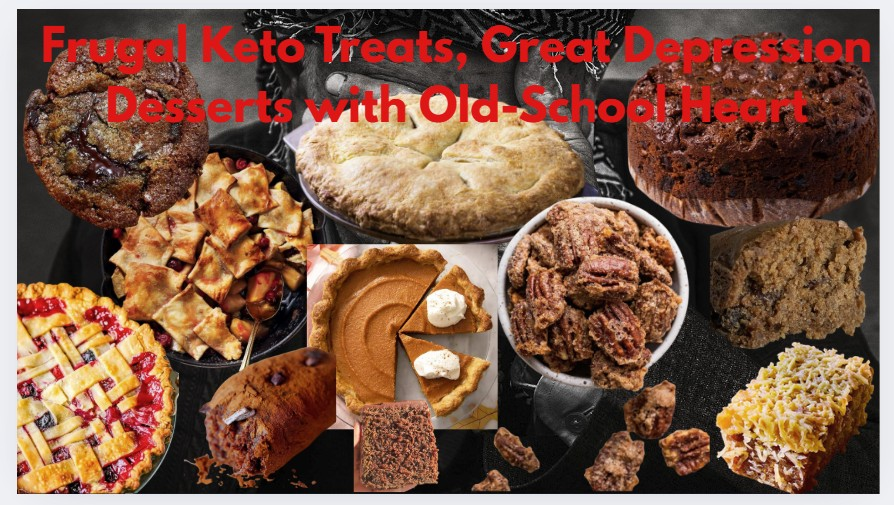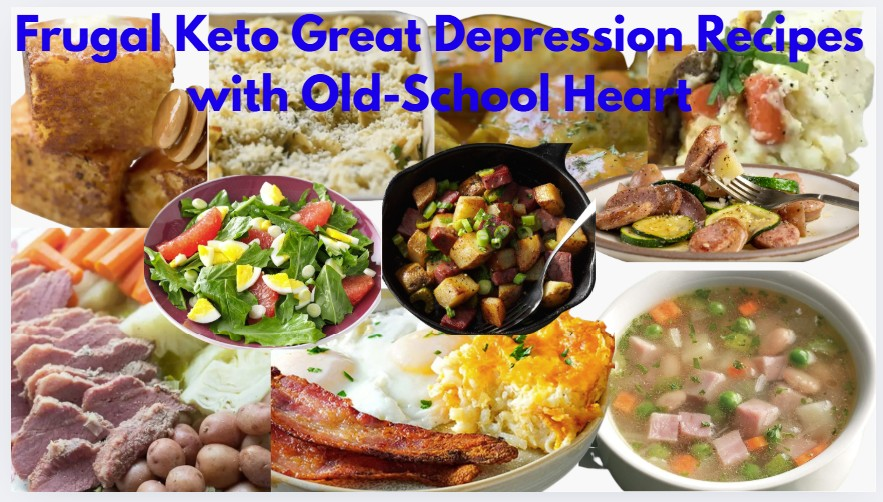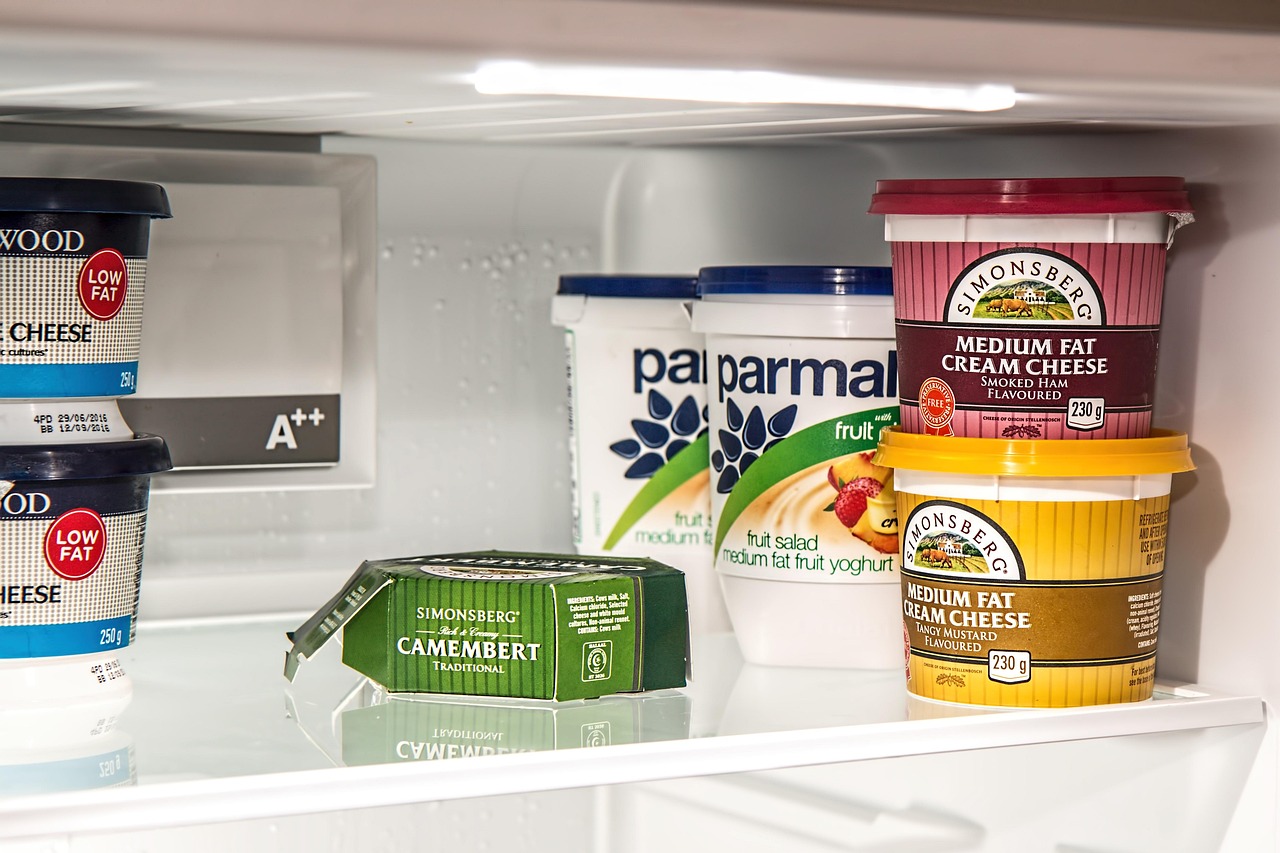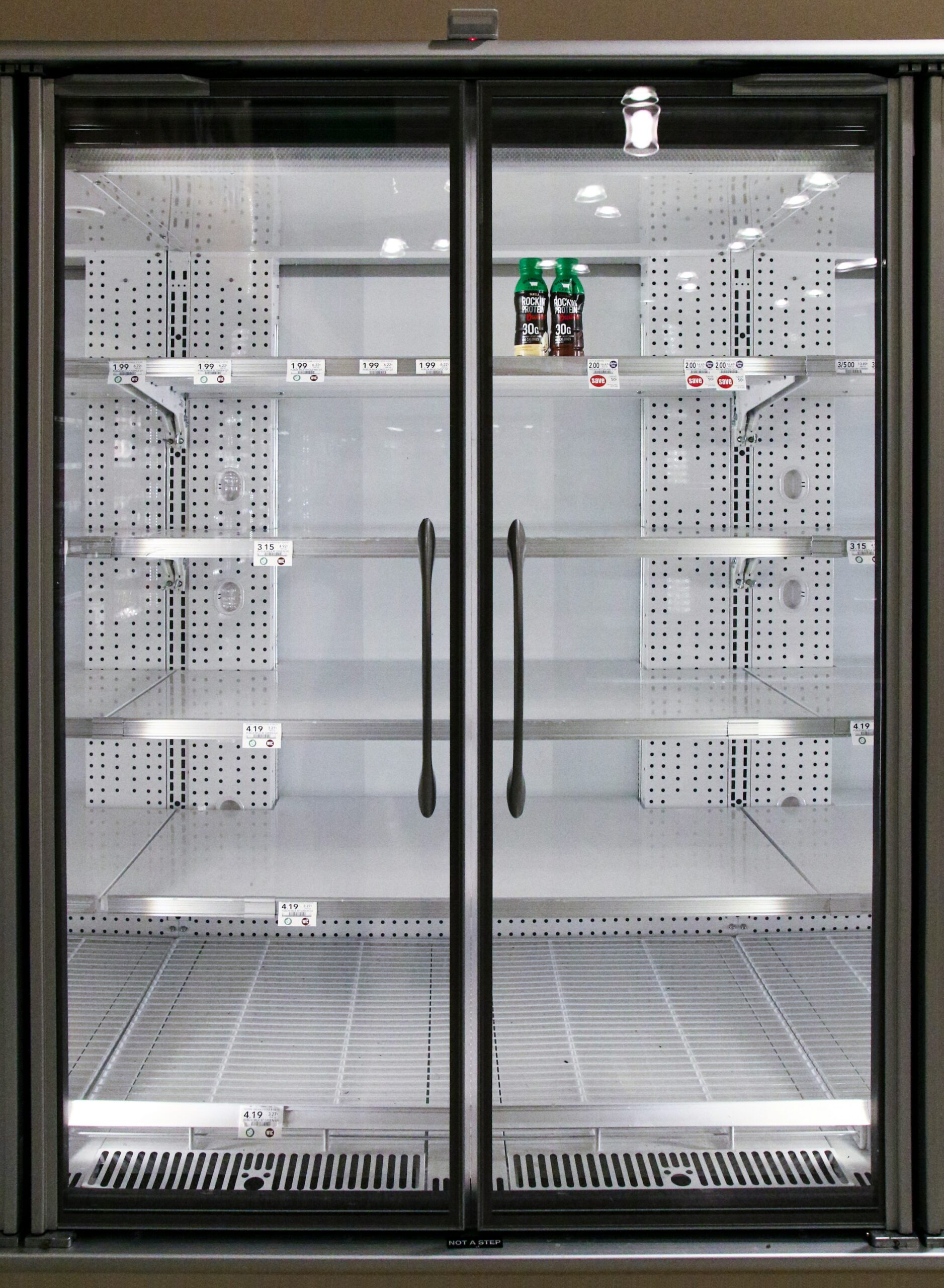Ever stood in front of your freezer, staring at a pack of wilting spinach or the last two bagels on the counter and thought, “Can I actually freeze this stuff?” Turns out, most people don’t realize just how many foods can go right in the freezer and still taste great later. From shredded cheese to ripe avocados (yes, really), freezing opens up all kinds of possibilities for leftovers and bulk buys. After testing my way through more than a few mystery containers, I found that freezing isn’t just for budget meals or boring old casseroles. Foods like cooked grains, butter, even baked muffins keep their taste and texture with a few smart tricks. According to registered dietitian Rachel Paul, PhD, “freezing locks in nutrients and flavor, as long as you store foods properly.” Try freezing these foods and see how much easier meal prep gets—your grocery budget, and probably your sanity, will thank you for it.
Why you should use your freezer more
- It saves you time! Freeze already prepped food to have on hand for an easy meal or snack later.
- It saves you money! Buy in bulk and stock up on good sales and then freeze what you won’t use right away.
- It keeps things fresh! No more throwing out stale or spoiled food. Freeze it instead!
- It’s convenient! Having things on hand eliminates the need for last-minute runs to the grocery store.
- It’s healthy! Freeze fresh fruits and veggies when they are in season or on sale to enjoy all year long.
Foods that Freeze Well
1. Butter
Butter keeps its shape and flavor in the freezer, so you don’t have to worry about it turning crumbly or gritty after thawing. I learned this trick from a pastry chef who swears even high-end restaurants keep extra butter stored this way (she said their walk-in freezers always have blocks of unsalted butter stacked like gold bars). Now, every time I see a good sale, I stock up—sometimes a whole case at once—and toss the extras into my deep freeze. When I pull out a stick months later, it tastes just as fresh as the day I bought it. For anyone who bakes a lot or just uses butter every day, freezing it saves money and trips to the store. Keep it wrapped well to avoid picking up off-flavors from nearby foods, and you’ll always have butter on hand.
2. Milk
Milk sometimes separates a little after freezing, but once you shake it up after thawing, it comes back together. I’ve used thawed milk for everything from pancakes to mac and cheese, and never noticed much difference in the final dish. Before freezing a jug, take a quick look at the container. If your plastic jug has a built-in, indented circle on the side (it looks like a soft dent), you can freeze the milk straight in that container. That circle gives the jug room to swell as the liquid expands, which keeps it from splitting in the cold. If there’s no circle, pour out an inch or two before freezing, just to make space and avoid a big mess. Small details like these help avoid freezer surprises and make using up extra milk easy—especially if you do a lot of baking at home.

3. Sour Cream
When you freeze sour cream, its texture changes—it gets a bit grainy and separates. The taste doesn’t really shift, though. I don’t mind at all, since I just add it to casseroles, soups, or baked dishes where the way it looks or feels isn’t a big deal. A few food scientists back this up too; they say the milk fats and proteins change a little in the freezer, which messes with the creamy texture you expect straight from the fridge. For me, it’s an easy way to cut food waste. Just don’t bother stirring it into a cold dip, since the rougher texture stands out.
4. Cottage Cheese
I used to let half-empty containers of cottage cheese sit in my fridge until they spoiled, mostly because I never found enough recipes that called for it. After tossing one too many tubs, I gave freezing a try. The texture does shift—cottage cheese separates and turns a bit watery after thawing, which isn’t ideal for topping toast but works fine for cooking. I now save any leftovers and use them in casseroles, soups, lasagna, or even muffins. The flavor holds up, and the extra liquid isn’t a problem once everything bakes together. If you’re in the same situation, don’t let the texture throw you off. For baked dishes, frozen cottage cheese is a practical fix.
5. Cream Cheese
Cream cheese changes after it’s been frozen. The texture turns crumbly and might weep a little, losing that smooth spread so many people love on bagels. I’ve tested this at home—cut into a thawed block and it’s clear why spreading gets tough (imagine cold cottage cheese). While that does knock it out of the running for your morning bagel, don’t count frozen cream cheese out. It still works in baking, dips, or cooked dishes. The change in texture isn’t an issue once mixed or melted. In fact, in casseroles and cheesecakes, no one notices a thing. My grandmother always kept backup blocks stashed in the freezer for baking days. Her cheesecake turned out rich every time, no matter if the cream cheese started out frozen. It’s a handy trick if you hate food waste or like prepping ahead (who doesn’t?).
6. Yogurt
If you have some yogurt you think might go bad before you finish it, try freezing it. Yogurt holds up well in the freezer, though the texture changes a tad—think ice cream that’s been out a little too long. I pop leftover yogurt into single-serve containers, then stash them in the freezer (even a silicone ice cube tray works if you want small amounts for blending). It won’t stay silky smooth after thawing, but it’s still great for pancakes, smoothies, or baking. According to dietitian Sara Haas, RD, “Frozen yogurt keeps its nutrients, so you don’t lose protein or calcium.” You might notice the texture gets grainy or separates after thawing, but a quick stir usually pulls it together enough for most recipes. If texture doesn’t bother you, frozen yogurt can even be a handy snack right out of the freezer, especially with a bit of fruit or honey. Give it a try next time you’re worried that container in the fridge won’t make it.

7. Shredded and Sliced Cheese
Spotted a great price on shredded cheese? Grab a few extra bags and keep them in the freezer. It’s a simple trick that helps cut down on trips to the store, especially when recipes call for a last-minute sprinkle. I’ve found frozen cheese keeps its texture pretty well (just toss it straight into your pasta or over nachos—no need to thaw). If you prefer to shred your own cheese, that’s easy too. Homemade shreds do clump a little after freezing, but I just break them apart with my hands or shake the bag before using. Most cooks and dietitians agree: freezing cheese this way doesn’t hurt the flavor, and a dash of cornstarch in the bag can help keep pieces separate. My advice? Watch for sales and fill your freezer. It’s one less thing to worry about on busy nights.
8. Onions | Peppers | Carrots
Freezing vegetables raw saves a lot of time in the kitchen, especially if you enjoy cooking but hate chopping veggies every night. Just dice or slice what you need, toss them in a freezer bag, and stash them away. Next time you’re making soup or stir-fry, you’ll have onions, carrots, or peppers ready to use—no thawing required. If you want to avoid chunks that stick together, try flash freezing. Lay your chopped veggies out on a baking sheet so they freeze separately (I did this last fall, and it made a difference when I needed only a handful for a quick recipe). Once they’re solid, slide them into a bag for easy storage. A word to the wise: onions like to share their smell with everything nearby, so double-bagging helps keep your freezer bread from tasting extra savory. Using these simple steps, you can skip the prep without sacrificing flavor or freshness.
9. Zucchini
Grating zucchini and freezing it is almost too easy. Just wash, grate, and toss it in a freezer bag. Next time you want to bake or toss together a quick zucchini fritter, pull out what you need. Thaw, squeeze out any extra liquid, and you’re set. The texture works well in recipes where it gets mixed in anyway. If you like diced zucchini, there’s one extra step. I tried freezing diced raw, and it turned soft and unappetizing. Blanching for just a minute before freezing makes a big difference—the pieces hold their shape much better once thawed. While nothing beats fresh, this method keeps the zucchini firm enough for sautés or casseroles. Honestly, it’s a lifesaver when your garden explodes with zucchini and you don’t want anything to go to waste.

10. Grapes
Frozen grapes are a small thing that can make your afternoon feel a little more fun. They crunch at first, then melt in your mouth with an icy burst of sweetness. If you’ve never tried them, you’re missing out—especially when it’s hot outside. Dietitian Allison Koch, RD, says, “Frozen grapes are refreshing, low-calorie, and full of natural antioxidants.” I started freezing grapes after a friend mentioned it at a picnic, and now I buy extra when they’re on sale. Just wash, dry, and toss them in a freezer bag (it’s really that easy). They’re perfect for lunch boxes or beating a snack craving without added sugar. Bonus: freezing can stretch their shelf life by another couple of weeks, which means less food waste and more healthy snacks at the ready. Have you stashed a bunch in your freezer yet?
11. Bananas
Frozen bananas work like magic in the kitchen. Once frozen, they get soft and darker in color—but the flavor stays sweet, sometimes even better. If you’re making smoothies, just grab a few frozen slices and toss them in the blender. Bakers know that thawed, mushy banana blends right into batter for muffins or banana bread, so don’t worry if it looks a little dark after freezing.
To freeze bananas, peel and cut them however you want, then spread them out on a baking sheet for an hour (that’s called flash freezing). After they’re firm, move them to a freezer bag. This step keeps them from sticking together. If you like things extra organized, mash the bananas first, measure out what you need for a recipe, and freeze in small portions. A quick tip: label each bag with the amount inside, and you’ll save time when you’re ready to bake. Frozen bananas rarely last long at my house, and honestly, they make smoothies way creamier than fresh. Give it a try and see if you notice the difference.
12. Berries
Berries get pricey fast, so I grab extras whenever I catch a deal and stash them in the freezer. It’s simple: wash, dry well, toss into bags, and freeze—done. For softer berries like raspberries, the flash freezing trick (think back to what I shared about onions and peppers) keeps them from clumping up, which means I can scoop out exactly what I need. Texture shifts once they thaw—expect soft, maybe even a little mushy—so I toss them straight into smoothies or fold them into muffin batter without thawing. There’s something satisfying about eating them frozen, too: tart, icy bites that taste like summer, even in January. If you love breakfast bowls or homemade pancakes, frozen berries make solid backups when fresh isn’t in the cards.
13. Pesto
Basil is always at the top of my planting list because fresh pesto is a staple in my kitchen. If you grow basil, you probably know how tricky it is to use it all before the leaves wilt (or turn slimy). My workaround is freezing batches of homemade pesto in a small muffin pan. Once the pesto sets, I pop out the disks and store them in a freezer bag. Single servings make weeknight cooking easier and let me add a quick hit of fresh flavor to pasta, eggs, or soup. Ice cube trays work too, but I’ve found they pick up basil’s scent and get stained. My metal muffin pan avoids both problems, and the portions are just right. If you can relate to the basil scramble every summer, try this approach and see how much easier meal prep gets.

14. Pasta Sauce | Tomato Paste
Tired of tossing half-used cans of tomato paste or jars of pasta sauce? Try freezing them instead. After years of scraping dried-out paste from forgotten containers (and regretting every bit wasted), I picked up a simple trick: portion leftovers into a muffin pan or silicone tray. The smaller cups fit tomato paste well, while the bigger ones hold extra pasta sauce. Pop them in the freezer until solid, then transfer the frozen rounds to a freezer bag. It takes a few minutes, but you’ll always have the right amount ready for recipes—no more guessing, no more waste. For busy nights, it’s a small change that actually works and saves money. Plus, you can freeze just about any sauce this way, so start experimenting with your favorites.
15. Garlic
I can’t count how many heads of garlic have sprouted on my kitchen counter, forcing me to toss them before I got the chance to cook with them. After too many wasteful weeks, I gave up on leaving garlic at room temperature and started freezing it right when I bring it home. The change was instant—I quit throwing out half-used bulbs, and I always have fresh-tasting garlic on hand. You can freeze garlic whole or break it into cloves (peeling the skins off first makes things easier later). Grab a frozen clove straight from the bag and toss it into your dish. It crushes or presses almost as easily as fresh. The flavor holds up in every quick sauté or slow-simmered sauce. If you’re tired of watching your garlic go green and sprout before you use it up, give the freezer method a shot. I wish I’d started sooner.
16. Avocado
Avocados cost a lot, especially when they’re not on sale, so wasting even part of one feels frustrating. I’ve found that a sprinkle of lemon juice keeps the bright green color intact (it really does help fight off that quick browning). When you freeze cut avocado with lemon juice, it holds up fine for recipes where texture isn’t the star—like in a creamy salad dressing or a smoothie. Eating thawed avocado plain is a letdown because the texture turns a bit mushy, so I wouldn’t serve it on toast or in slices. But if you’re mixing it with other ingredients, frozen avocado is a practical way to cut down on waste and still enjoy that rich, mellow flavor whenever you want.
17. Citrus Juice | Citrus Zest
Buying citrus in bulk makes sense if you go through a lot or hate last-minute trips for a single lemon. Once you get home, just juice the extras and freeze the liquid in ice cube trays. Each cube equals about 2 tablespoons, so it’s easy to measure out later for recipes, drinks, or even a quick vinaigrette. The freezer also does a great job preserving zest—just scrape the peel as usual, put it in a plastic bag, and pull out a pinch when you want that bright flavor. Warming citrus in the microwave for ten seconds helps you squeeze out even more juice (a tip from a friend who bakes professionally and swears by it). No waste, no running to the store, and you’ll always have real citrus flavor on hand. Trays work for other fruit juices too, but lemon, lime, and orange cubes seem to get the most use in my kitchen. Give it a try and see if these freezer tricks help you cut back on food waste.
18. Apple Pie Filling
Keeping apple dessert kits in the freezer saves time and cuts down on kitchen stress. I often peel and slice apples ahead of time, toss them with sugar, cinnamon, and maybe a little flour, then pour everything into a sturdy freezer bag. That way, when you want a pie or crisp, you just grab a kit and dump it into your baking dish. Add your favorite extras—mine are cold cubes of butter and a splash of milk for extra richness. Bake straight from frozen (no need to thaw), and you get homemade apple dessert in about an hour. It’s smart, it works, and the apples keep their texture better than you’d think. If you bake often or want to avoid extra prep, this is a small shift that makes dessert much simpler.
19. Yeast
If you want your yeast to last for the long haul, toss it in the freezer. I first tried this trick after reading about it from a few bread-baking forums, and honestly, it’s been a life-saver (or should I say, loaf-saver). According to bakers like Peter Reinhart, yeast kept frozen doesn’t lose its rising power the way it does sitting at room temperature or even in the fridge. I’ve used packets that were two years old, straight from the freezer, and they performed just as well as a fresh batch. Just pop the yeast back in as soon as you scoop what you need (condensation is its enemy), and you’re set for years. If you like to bake on a whim or hate wasting ingredients, this simple move keeps you covered.

20. Cookies
Freezing cookies keeps them fresh a lot longer, whether you made them from scratch or bought them. I always reach for a big 5-quart ice cream bucket when I bake a big batch at home (yes, I do save empty ones—nothing fancy but they really work). Just layer the cookies inside, pop on the lid, and slide the bucket into your freezer. The cookies hold their texture and flavor for weeks, and you can pull out as many as you need, whenever you want. Some bakers suggest adding a sheet of wax paper between layers, but I’ll admit, I usually forget, and everything still tastes just as good. If you’re short on freezer space, try using a zip bag instead—though honestly, the bucket feels sturdier if you have a lot to store.
21. Cookie Dough
There’s something satisfying about having cookie dough ready in the freezer. Just the idea of baking a few cookies at a time, without the mess, makes weeknights feel special. Here’s what works: roll the dough into balls, give them breathing room in a freezer-safe container, and you’ll thank yourself later when they don’t stick together. If you like using freezer bags, flash freeze the dough on a baking sheet so each scoop holds its shape, then move them to the bag. When the mood strikes, grab a few and bake straight from the freezer—just tack on an extra minute or two to the oven time. Warm cookies on demand (without the fuss) never lose their charm.
22. Muffins/Sweetbreads
Muffins and sweetbreads freeze better than most people expect. Fresh from the oven, they’re soft and a little crumbly, but once you freeze them, something magical tends to happen. I’ve noticed this with banana bread and blueberry muffins in my own kitchen (especially after busy weeks when baking ahead keeps things sane). Once thawed, these treats often come out even moister than before. Experts at America’s Test Kitchen point out that freezing traps moisture, which then redistributes as the baked good thaws. This can be a lifesaver for anyone who likes to batch bake. I like to wrap each muffin or slice of sweetbread in plastic before freezing, then tuck them into freezer bags to keep them fresh. When you pull them out and let them warm up on the counter, you end up with a snack that tastes almost like you just made it. If you’re short on time or want to save your favorite bakes, don’t hesitate to use your freezer.
23. Cake
My mom always had a moist cake in the freezer for those last-minute visitors or just an easy dessert option. I’ve heard plenty of advice from people insisting you shouldn’t freeze a cake that’s already frosted, but honestly, I go right ahead and do it. It saves time and feels more practical to pull out something that’s truly finished. Sometimes the icing sweats a bit when it thaws, leaving behind small beads of water, but that never changed the flavor in our house. If you use homemade colored frosting, though, watch out for color bleeding—it’s happened to me before. Still, for the convenience and taste, it’s an easy trade-off.

24. Bread
See your favorite bread marked down? Stock up and slide those extra loaves right into the freezer. Bread holds up better than you’d think, even after a month or two (I’ve pulled homemade sourdough out of the icebox and it tasted as fresh as the day it cooled). If you like to bake, freezing comes in handy since most recipes make more than one loaf. Just wrap cooled bread in plastic or foil and store it in an airtight bag—no fancy equipment needed. When you want a slice, let it thaw on the counter or toast straight from frozen. This small habit can cut your grocery bill and reduce waste, which always feels good.
25. Bread Crumbs
I used to buy bread crumbs now and then, but I’d always run into the same setback: by the time I needed them again, that box in the pantry smelled off or showed signs of going rancid. It didn’t matter if the seal was tight; the crumbs just didn’t keep well. My mom’s tip changed everything—she suggested storing bread crumbs in the freezer rather than the cupboard. Since freezing them, I haven’t had a single batch spoil. They don’t clump together (which I worried about at first), and the flavor stays fresh, whether I reach for them in a week or a few months. I just scoop out what I need and pop the rest back in. Simple fix, but it has saved me money and cut out a lot of waste. If you have the same trouble, I’d recommend it. The freezer solves the whole rancid crumb problem in one go.
26. Pancakes
If you’re pulling out the mixing bowls for pancakes, doubling the recipe just makes sense. Extra pancakes freeze well and save so much time during busy mornings. Stack them with a piece of wax paper in between so they don’t stick. When you’re ready to eat, you’ve got options—microwave for speed, or pop them in the toaster if you like crisp edges and a little color (our hands-down favorite in my house). Having a stash in the freezer turns a quick breakfast or lunch into a no-fuss event. Plus, kids love grabbing their own pancakes, which means less work for you. Give it a try and see how much smoother your routine feels.

27. Pie Crust
Most pie crust recipes leave me with more dough than I need. I used to wonder what to do with these extra rounds—letting them sit in the fridge never worked well, and I hate wasting food. Freezing extra pie dough turned out to be a lifesaver. I shape each leftover piece into a small disc (nothing fancy, just press it flat), wrap it up tight in plastic, and pop it into a freezer bag. When I want fresh pie, I just take out a disc, let it thaw in the fridge, then roll it out as usual. This method keeps the dough flaky and rich, even weeks later. It’s simple, saves time on busy days, and cuts down on food waste. Plus, knowing I have dough ready feels oddly empowering for those last-minute baking moods.
28. Cooked Rice
Cooking rice in bulk saves time, especially if you find yourself needing just a scoop here and there for last-minute meals. After cooking a large batch (I usually use a rice cooker since it’s simple and hands-off), let it cool and pack it into a freezer-safe container. If you want to grab only what you need later, spreading the rice on a baking sheet and freezing it for about an hour before transferring it to bags works well. This way, the grains stay loose and you won’t end up with one big block. When you’re ready to reheat, toss a bit of water with the rice and warm it through on the stove or in the microwave—keeps it moist and stops it from turning dry or crunchy. I’ve found this handy when I need a quick side or want to mix up a homemade fried rice without starting from scratch.
29. Cooked or Dry Beans
I love cooking up a big pot of beans on a slow Sunday. After they cool, I portion them into two-cup containers, which matches a standard can. It feels satisfying to know I always have beans on hand for soups, salads, or quick chili (no more scrambling for a can at the last minute). Freezing in small batches saves both time and money since you’re not repeating the whole process every week. You can also freeze cooked dried beans without any trouble. Most experts say beans hold up well in the freezer—just make sure to let them thaw in the fridge or drop them straight into a simmering dish. I’ve even found the texture stays pretty close to freshly cooked, which is more than I can say for most store-bought options. Give it a try if you want healthy ingredients ready to go.
30. Tortillas
Have tortillas tipping toward their best-by date but not ready to hit the skillet? Pop them in the freezer. Freezing holds off spoilage, so you won’t waste the whole batch. They do dry out a little—the edges get stiffer, and you might notice a slight change in texture once thawed. Still, they’re great for quesadillas or quick wraps (I’ll admit, I’ve defrosted a stack more than once when dinner inspiration hit late). If you want softer tortillas, try wrapping them in a damp paper towel before reheating. Some chefs say that extra moisture brings back a bit of life from the freezer, and I’ve found it works in a pinch.
31. Flour
Help your flour last longer by storing it in the freezer. I used to let bags of all-purpose flour sit in the cupboard, but after a few months, I’d notice a hint of mustiness or even the occasional tiny bug (if you’re lucky, you spot them before they get far). That’s when a friend—who owns a bakery—suggested moving flour straight to the freezer, unopened bag and all. If you’ve opened your flour, just pour it into a freezer bag, squeeze out the air, and seal it tight. The cold keeps it fresh and safe from pests. “Flour is best stored in a cool, dry place to prevent spoilage,” says food scientist Kelly Jones, MS, RD, so a freezer works like a charm. If you bake a lot, you’ll notice the flour still pours easily, with no odd flavors or textures. Just let it warm up to room temp before baking if you have the time (I tend to use it straight from the freezer without a problem). Give it a try—your pancakes and cookies will thank you.
32. Chips, Pretzels, Graham crackers, Crackers, Popcorn
If you keep finding half-eaten bags of chips, pretzels, or crackers turning stale in the pantry, you’re not alone. I started tossing mine in the freezer, and honestly, it works better than any fancy storage gadget out there. The freezer keeps snacks crisp for weeks (sometimes even months), and you don’t have to fuss with airtight containers or weird bag clips. “Freezing stops the oxidation process that makes snacks go stale,” says registered dietitian Lisa Young, PhD. The crunch stays sharp, and the flavors don’t fade. Plus, throwing snacks in the freezer helps when you want to grab extra during a sale—stash them for later, and nothing goes to waste. Just pull out what you need and let it sit for a few minutes (if you can wait that long). It’s a small switch, but it saves money and keeps snacks exactly how you like them.

33. Nuts
If you’ve ever opened a bag of pecans only to find a strange musty smell, you know what stale nuts taste like (I’ve made that mistake more than once). Nuts contain oils that spoil faster than you might expect, especially if you keep them in a warm pantry. Storing them in the freezer slows down that process—a tip a nutritionist friend shared with me years ago. According to food safety experts, freezing nuts keeps their natural oils from going rancid, and it also preserves that fresh crunch. Some people worry they’ll pick up unwanted freezer flavors, but if you use a good airtight bag or container, they stay just as tasty as when you first bought them. I grab my walnuts straight from the freezer for baking and salads—the flavor holds up, and they always have a nice snap when you bite in. If you buy nuts in bulk or use them slowly, there’s no smarter place to stash them. Give it a shot and see how much longer your favorite snacks last.
34. Popcorn Kernels
We go through popcorn more slowly than you might think. Sometimes, a bag will sit in the pantry for months. By the time I pull it out, I run into an old issue: half the kernels don’t pop. It’s frustrating, and I never liked tossing so many away. A friend—a real popcorn enthusiast—told me to keep the kernels in the freezer. I tried it, and was surprised at the difference. After a few months, my popcorn popped almost perfectly, with only a few stubborn kernels left behind. The cold keeps the moisture inside each kernel, which matters if you want that satisfying crunch (and fewer wasted bits at the bottom of the bowl). If you ever wonder why your popcorn isn’t popping like it should, consider this trick. Cold storage keeps the kernels fresh, and you get better results—simple as that.
35. Soups
Having frozen soup ready in the freezer makes quick lunches and dinners feel effortless. Homemade soup isn’t just comforting—it tends to have less sodium and fewer preservatives than most store brands (which nutritionists point out can support long-term heart health). To freeze soup, just cool it to room temperature, then pour it into a sturdy, freezer-safe container. Leave about half an inch to an inch of space at the top for expansion as it freezes. I’ve learned the hard way that skipping this step can crack the container or leave you with a frozen mess—so it’s definitely worth the small effort. The payoff is real: hearty, wholesome soup anytime you want, with the same rich flavors and ingredients you put in yourself.
36. Casseroles
Making a double batch of casseroles makes life easier, especially when the week feels rushed and dinner gets squeezed out. I’ve started freezing the extra pan, well-wrapped, for nights when I barely have enough energy to contemplate take-out. The relief when you remember there’s a homemade meal in the freezer can’t be overstated—just reheat, add a side salad, and the day feels back on track. Nutritionists often recommend meal prepping as a way to eat better without extra stress (I’ve found I rely less on drive-thru visits when there’s a backup in the freezer). If you haven’t tried this yet, it really does buy you time and peace of mind later.

37. Broth | Stock| Roux
If you’ve got half a carton of chicken broth sitting in your fridge and you know you won’t finish it soon, don’t let it sour. Extra roux (the classic thickener of butter and flour) actually keeps texture and flavor in deep freeze. Pour your leftover broth or roux into a freezer-safe container, label it with the date, and slide it into the freezer. I’ve done this with both store-bought broth and homemade roux—each one thaws without much fuss and holds its own in soups or stews. This trick saves waste and makes weeknight dinners a lot easier. No last-minute grocery runs. Give it a try if you’re tired of tossing half-used containers.
38. Lunch Meat
We go through quite a few sandwiches at lunchtime, so I try to keep things budget-friendly with a simple routine: When lunch meat goes on sale, I buy enough for several weeks. If we won’t eat it before the date on the package, I toss the extras straight into the freezer (sometimes breaking it into smaller packs so it thaws quicker). The sliced turkey and ham taste just as fresh after they defrost, and nobody at the table notices a difference. If you haven’t tried freezing lunch meat yet, it’s one of the easiest little tricks for stretching your grocery budget.












